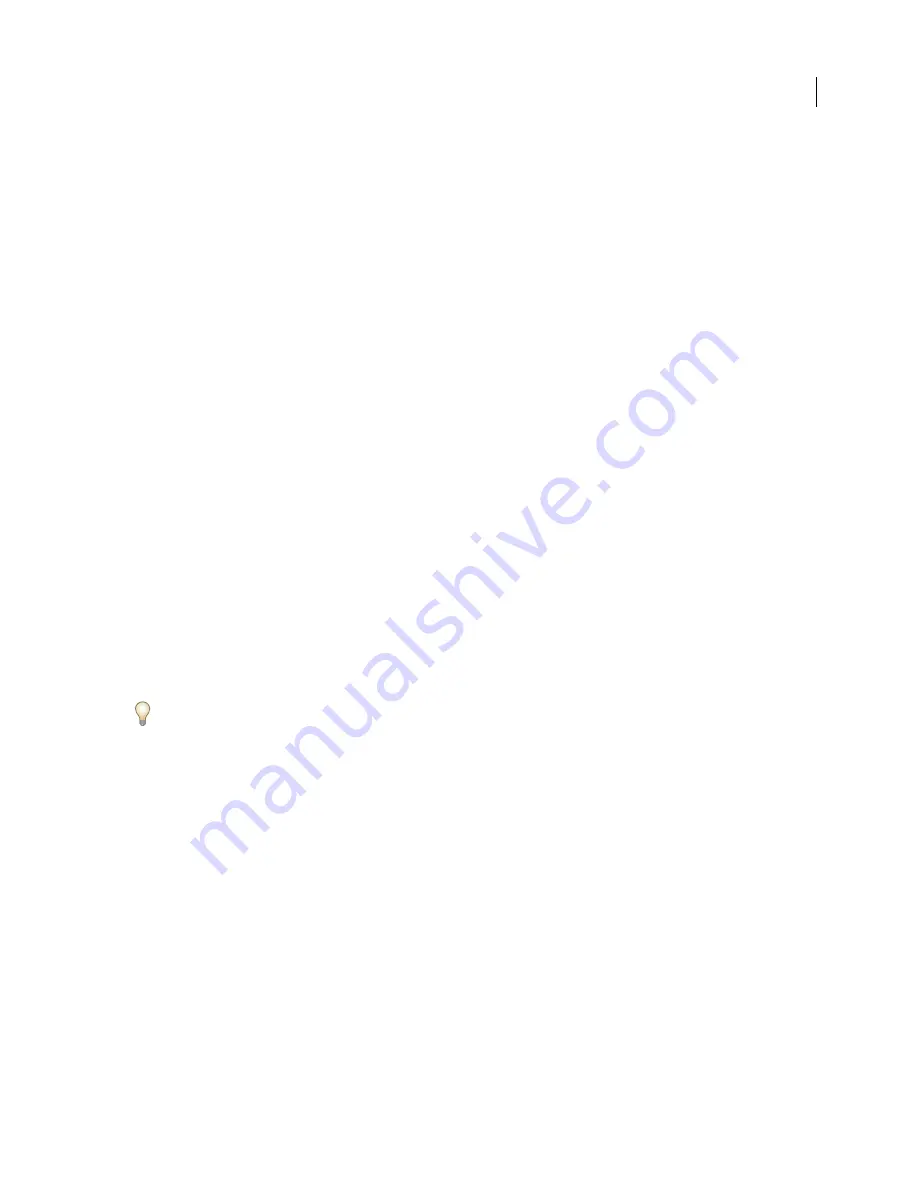
325
Chapter 11: Painting
Painting changes the color of image pixels. You use painting tools and techniques to retouch images, create or edit
masks on alpha channels, rotoscope or paint on video frames, and to paint original art. Brush tips, brush presets, and
the many brush options give you creative control to produce stunning painting effects or to simulate working with
traditional media. You can work with several painting tools on 32-bit per channel, high dynamic range (HDR)
images including Paintbrush, Pencil, Smudge, Sharpen, Blur, Stamp, History Brush, Pattern Stamp, and Eraser.
Painting tools
About painting tools, options, and palettes
Adobe Photoshop CS3 provides several tools for painting and editing image color. The Brush tool and the Pencil tool
work like traditional drawing tools by applying color with brush strokes. The Gradient tool, Fill command, and Paint
Bucket tool apply color to large areas. Tools like the Eraser tool, Blur tool, and Smudge tool modify the existing colors
in the image. See “Painting tools gallery” on page 28.
In the options bar for each tool, you can set how color is applied to an image and choose from preset brush tips.
Brush and tool presets
You can save a set of brush options as a preset so you can quickly access brush characteristics you use frequently.
Photoshop includes several sample brush presets. You can start with these presets and modify them to produce new
effects. Many original brush presets are available for download on the web.
You choose presets from the Brush Preset picker, which stores preset brushes and allows you to temporarily modify
the diameter and hardness of a brush preset.
Learn the shortcuts for changing paint tool size and hardness. See “Keys for painting objects” on page 642.
You use tool presets when you want to save brush tip characteristics along with settings from the options bar, such
as opacity, flow, and color. To learn more about tool presets, see “Create and use tool presets” on page 31.
Brush tip options
Along with settings in the options bar, brush tip options control how color is applied. You can apply color gradually,
with soft edges, with large brush strokes, with various brush dynamics, with different blending properties, and with
brushes of different shapes. You can apply a texture with your brush strokes to simulate painting on canvas or art
papers. You can also simulate spraying paint with an airbrush. You use the Brushes palette to set brush tip options.
See “Brushes palette overview” on page 332.
If you work with a drawing tablet, you can control how color is applied using pen pressure, angle, rotation, or a stylus
wheel. You set options for drawing tablets in the Brushes palette.






























